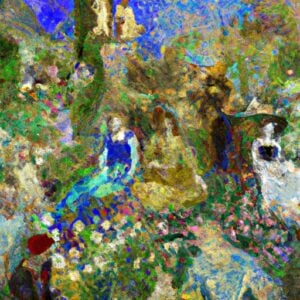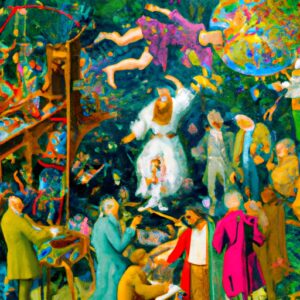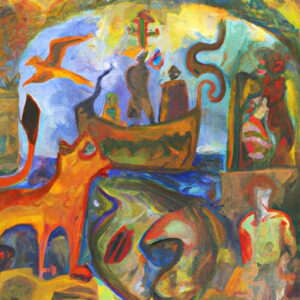Linguistic Classification of Italian
Italian: A Romance Language
Linguistically speaking, Italian is classified as a Romance language. The adjective “Romance” means it evolved from the regional dialects spoken during the Roman Empire.
It is Italy’s official language and is primarily spoken in parts of Switzerland, San Marino, Vatican City, Istria (Croatia), and Slovene Istria (Slovenia).
Just like me, there are around 66.000.000 more people out there who speak Italian as a first language. At the same time, 13.000.000 people have learned it and speak it as a second language, and, who knows, maybe you are one of them!
What Are the Other Romance Languages?
Other official Romance languages are Spanish, French, Romanian, and Portuguese, although ongoing linguistic discussions are considering non-national languages like Sardinian and Catalan as well.
Another way to call Romance languages is Neo-Latin languages because these are the languages that trace their roots back to Vulgar Latin.
To be honest, I personally like to call them Romance languages because I love the semantic link with romance as we mean it today. Are you wondering if there is any correlation? Stay with me and you’ll discover it.
How Did the Italian Language Evolve?
The Italian language started developing after the fall of the Roman Empire in the 5th century. Before that, Latin was the only language that was used for communication.
When the Empire collapsed, regional dialects started to emerge, influencing everyday life and forming the basis for the various Romance languages spoken across Italy and Europe.
When I was doing my BA in Linguistic Mediation, one of my philology professors used an amazing metaphor to explain Latin linguistic evolution. She called it “the theory of concentric circles” and applied it to Romance languages.
Imagine you throw a rock in a lake and the precise point where you drop the rock is Rome. Now, look at the waves expanding around the epicenter. That is the intensity and the geography with which Latin evolved!

Early Italian Texts
From Dialects to Italian
Early Italian texts date back to the 12th century and marked the beginning of the development of the Italian language and posed the foundations for what then became modern Italian literature.
Early texts were written using the various regional dialects of Italy. With time, these dialects gradually converged towards a standardized form, and, among all, the Tuscan dialect gained prominence due to its literary prestige.
Influential Literature Figures
Dante Alighieri, Petrarca, and Boccaccio are particularly significant for their roles in shaping Italian literary tradition, as well as for contributing to the standardization of the language.
Are you wondering why, specifically? Here are the main reasons:
- These poets used the Tuscan dialect to write their texts, which gained the reputation as the foundation for modern Italian, becoming, eventually standard Italian.
- They experimented with linguistic forms, vocabulary, and stylistic techniques, helping to expand and enrich the language’s expressive capabilities.
- Their works promoted a sense of national identity among Italians because they made literature more accessible to a wider audience.
- Their innovative use of language helped to establish norms and conventions that contributed to the standardization of Italian as a literary language.
- Their literary works had a lasting impact on Italian literature and language. Their writings are still being studied and celebrated, which confirms their positive repercussions in the evolution of Italian culture and language.
Unpopular opinion: I like Petrarca more than Dante!
To have your personal and strong opinion as well, find out more about the best Italian poets of all time and gain more knowledge into this amazing linguistic journey. Then tell me who you like the most!
Language Development and Standardization
The Importance of the Tuscan Dialect
However, it wasn’t until Italy’s unification in 1861 that the Tuscan dialect was used as the basis for what we now call modern Italian.
During the historical time called the Risorgimento, Italy was trying to become one united country. Part of this effort was to make sure everyone felt like they belonged to the same nation, and having a common language was of central interest.
This means that linguistic rules were made, and people started to work to teach everyone all over Italy how to speak and write in the same way. Eventually, Tuscan was formalized as the official language and gradually replaced regional dialects.
Modern Italian Development
Modern Italian still continues to evolve, influenced by globalization, technological advancements, and cultural exchange.
Efforts are currently being made to preserve the language’s rich heritage, but this process is inevitable, and I like to think of contemporary Italian as a reflection of the changing dynamics of society.
However, there exist language academies, such as the Accademia della Crusca, that are dedicated to maintaining linguistic standards and purity. They monitor changes in the language and provide guidance on what is considered correct usage.
In today’s interconnected world, people from different countries and cultures are constantly interacting. This means that Italian is exposed to words, phrases, and ideas from other languages and cultures.
As technology advances, new concepts and terms are introduced into society and the Italian language needs to keep pace with these changes.
The easiest and fastest way to do so is by creating new words or adapting existing ones to describe these technological advancements.
As you might have noticed already, words like “internet”, “email,” and “social media” have become part of everyday Italian vocabulary. I also wouldn’t know what Italian words to use in their place!
What are you using to read this article? A smartphone, tablet, or computer? And guess what: I would use these terms in Italian as well!

Italian is (Historically) the Language of Love
Now that you have more insights into the history of the Italian language, did you understand why Italian is considered “the language of love”?
Let me guide you through the process thanks to which we associate this description with Italian.
During the Middle Ages, tales of chivalry, courtly love, and heroic adventures were written in languages like Old French, Old Occitan, and Old Spanish, which eventually evolved into modern Romance languages.
Over time, these languages became vehicles for storytelling, poetry, and expressions of love and affection. This allowed the connection between Romance languages and romantic literature to develop further.
The direct consequence is that Romance languages became associated with the romantic ideals of the literature of the time. Then, the term “romance” shifted from its original meaning in medieval literature to denote notions of love and passion.
Nowadays, “Romance languages” refers strictly to a linguistic classification, but the term “romance” represents the emotional and often idealized aspects of love and relationships.
So, here is the reason why I love using the adjective “Romance” rather than “Neo-Latin” to classify Italian! Would you use Italian to express your love to someone?









